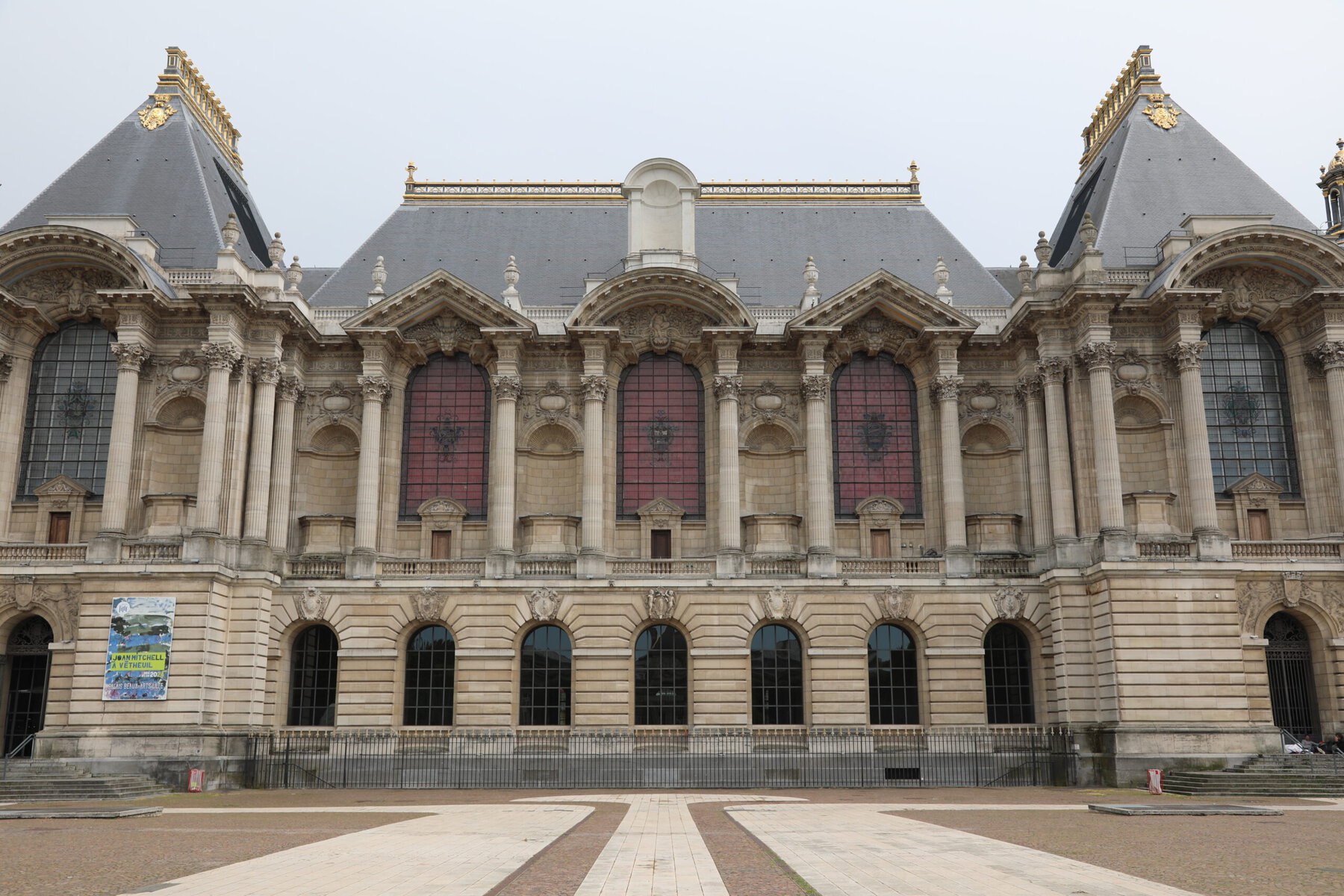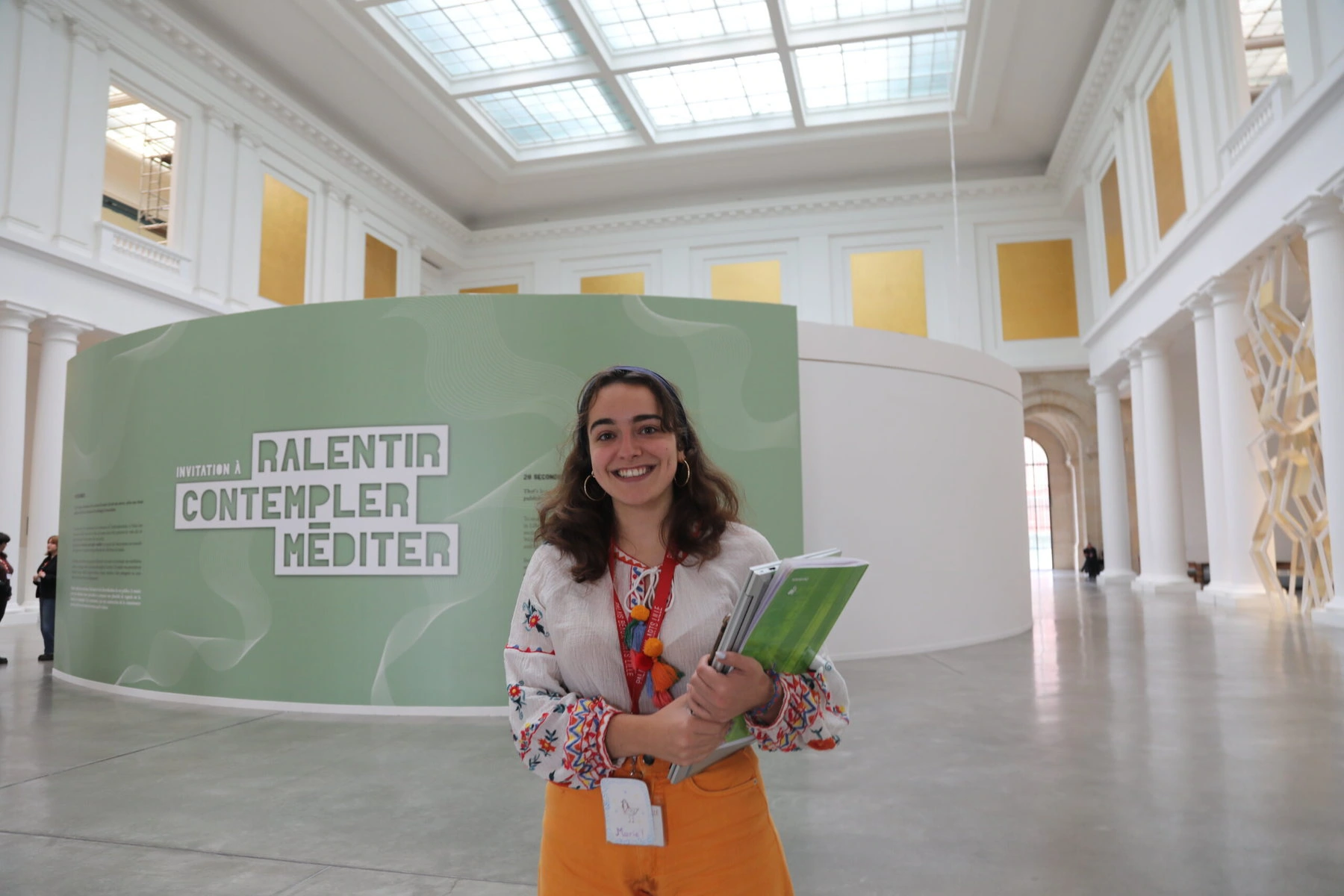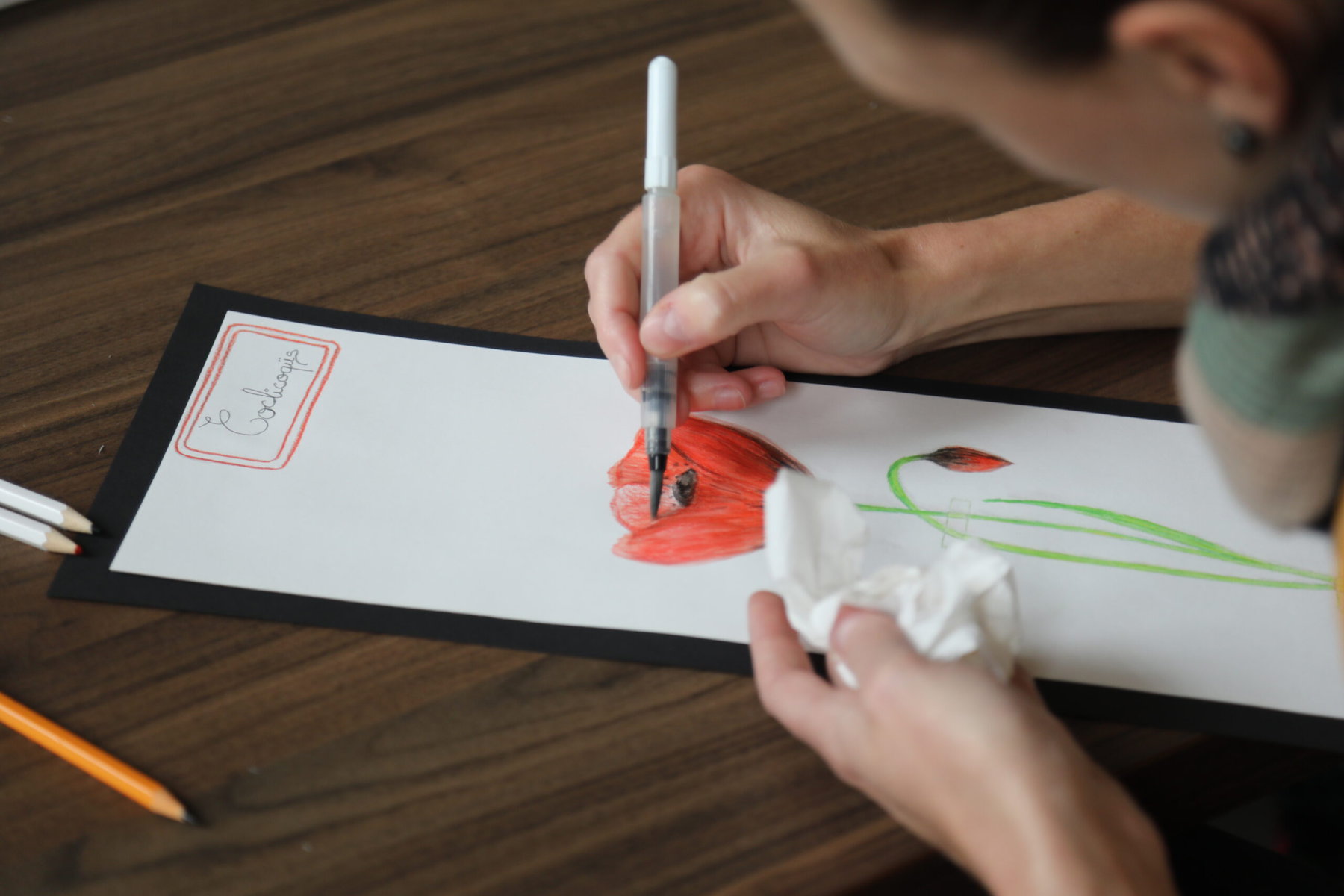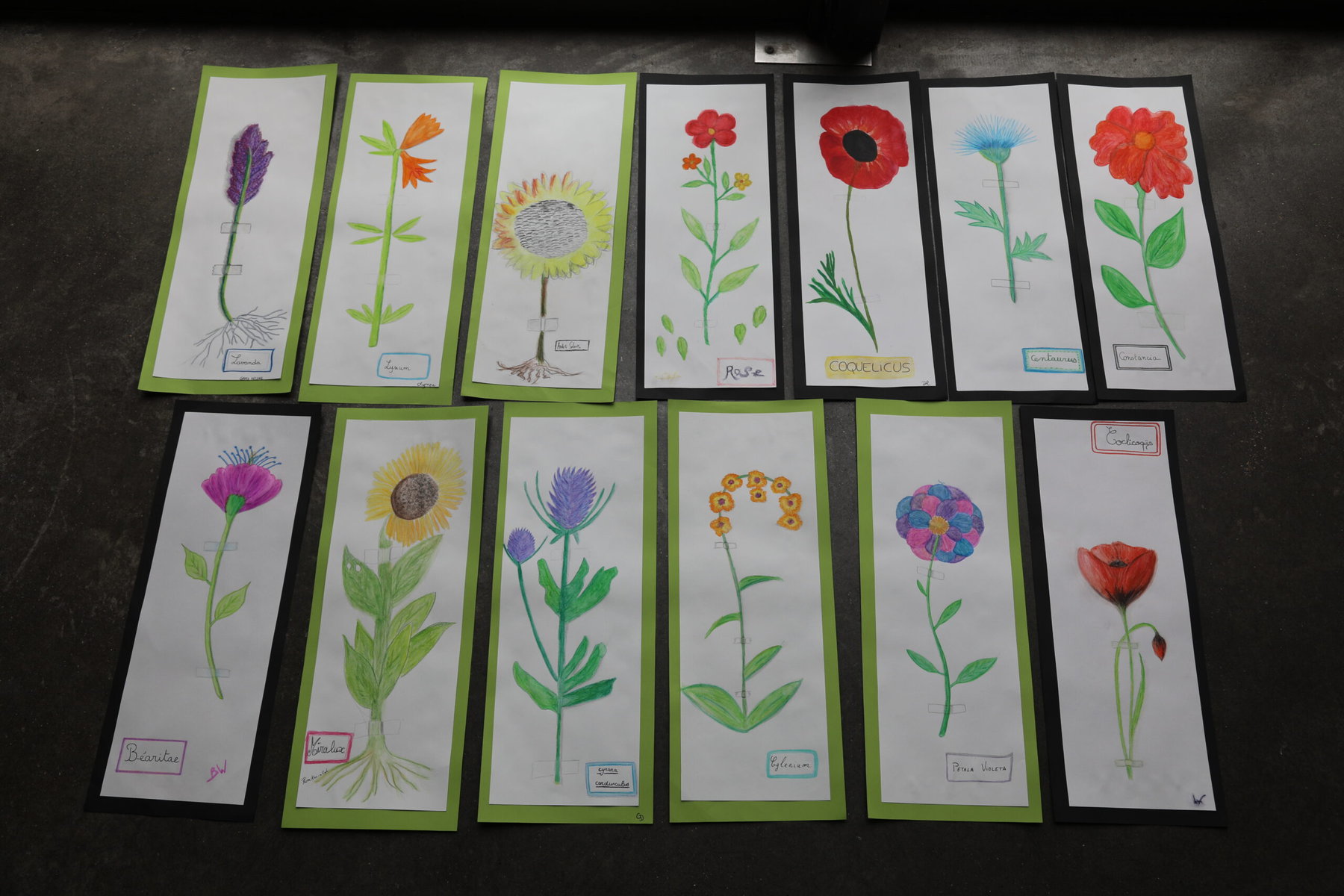This story was originally published by Reasons to be Cheerful
“Yes yes yes, that’s extraordinary,” exclaims Pascaline Bonnave, hopping around with glee after briefly studying a scarlet, poppy-esque drawing with her judicious eyes. “That’s really beautiful. Now you must give a name to it.”
Bonnave, dressed in blue jeans and a leather jacket covered in patches of flowers and birds, swivels to look at the progress of the other participants in her art therapy class.
The task for the dozen attendees today is to invent their own flower as well as to coin a plausible species name. There are tall, yellow florets heavily inspired by sunflowers; exquisite purple, mauve and pink posies; and winding chains of daisy-like blossoms.
“It’s not that it’s not beautiful,” adds Bonnave, encouraging one woman who doubts her floral creation. “You just need to finish it. Add some shading. Give it some roots.”
The afternoon’s activity, simple as it may seem, is part of a unique initiative drawing on the genuine power of art and culture to improve people’s health and wellbeing.
For more than a decade, the French city of Lille’s Palais des Beaux-Arts — which was inaugurated in 1892 and is home to France’s second largest collection behind only the Louvre — has deployed a kind of “museo-therapy” that uses the museum space and the treasures held within it to help treat patients from local hospitals.
But in September 2023, this initiative became a little more formal when it signed an agreement with the University Hospital Center of Lille (CHU) to offer 140 museum art therapy sessions over a year to patients who have been given a “museum prescription” by doctors, making it one of the most significant programs of its kind in the world.
The idea of a museum prescription, which fits under an umbrella of out-of-hospital, nonclinical treatment known as social prescribing, is that exposure to art and culture or history can complement, accelerate or potentially even displace some forms of medical care in traditional settings — in an effective, enjoyable and low-cost manner.

Lille’s Palais des Beaux-Arts has been working with all kinds of participants, such as people with Alzheimer’s, drug users and autistic children. Once a week, there’s also an open class for the general public. This day’s session is for women receiving treatment for endometriosis, medically assisted reproduction and gynecological or breast cancer.
Bonnave begins each two-hour session with a brief tour of the museum’s collection to inspire participants. For this class, she picked a few Realist paintings of flowers and fruits, otherwise known as nature morte, in the museum’s Dutch section.
“I know the power of art,” says Bonnave. “This place is a gold mine of inspiration.”
Then, participants move to another part of the museum to do an art therapy session.
The efforts, which began a decade ago with sessions for autistic children, were in part triggered by the museum’s need to involve the public in the arts as part of a French obligation for cultural institutions known as the PSC, according to Marie Vidal de la Blache, the Palais’s public development manager and lead for art-health projects.







